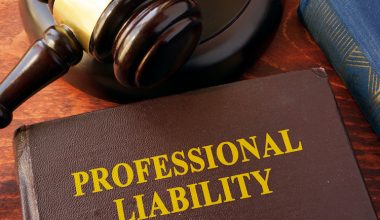Hold harmless agreements can be reciprocal (both parties forgo their right to sue the other party and are shielded from litigation) or unilateral (one party waives their right to sue and the other party is shielded from being sued). These kinds of agreements are especially prevalent in higher-risk industries, including construction, hospitality, event organizing, and outdoor leisure. Nonetheless, there are many situations in which startups and small enterprises might profit from a hold harmless clause.
Here we have the details of everything you need to know about holding harmless agreements, including how and when to use them in business.
Hold Harmless Agreement
A Hold Harmless Agreement, also known as an indemnity agreement or a release of liability, is a legal contract between two parties that protects one party from being held responsible for any damages, losses, or injuries that may occur during a specific activity or transaction. It transfers liability from one party to another in activities with inherent risks, such as construction projects or property use, ensuring no liability for damages or losses. There are three types of Hold Harmless Agreements which are Broad Form, Intermediate Form, and Limited Form.
Features of Hold Harmless Agreement
A Hold Harmless Agreement includes several key features that outline the responsibilities and protections of the parties involved. The main features of a Hold Harmless Agreement include
#1. Identification of Parties
The agreement should identify the parties involved, including their legal names and contact information.
#2. Scope of Agreement
The agreement should specify the scope and purpose of the activity or transaction for which the Hold Harmless Agreement is being entered into.
#3. Indemnification Clause
An indemnification clause should be in the agreement. This clause says that one party (the indemnitor) will protect and hold the other party (the indemnitee) harmless from any claims, damages, losses, or liabilities that may come up because of the activity or transaction.
#4. Description of Risks
The agreement may include a section that outlines the specific risks associated with the activity or transaction. This helps ensure that both parties are aware of the potential hazards involved.
#5. Insurance Requirements
The agreement may specify any insurance requirements that the parties must meet, such as maintaining liability insurance coverage throughout the activity or transaction.
#6. Limitations of Liability
The agreement may include provisions that limit the liability of one or both parties. These limitations may specify the types of damages or losses that are excluded from the indemnification obligation.
#7. Severability Clause
A severability clause states that if any provision of the agreement is found to be invalid or unenforceable, the remaining provisions will still be valid and enforceable.
#8. Governing Law and Jurisdiction
The agreement may include a clause that specifies the governing law and jurisdiction that will apply in the event of any disputes or legal proceedings.
#9. Signatures and Execution
The agreement should be signed and dated by both parties to indicate their acceptance and agreement with the terms outlined.
#10. Waiver of Claims
The agreement may include a clause where one party waives their right to make any claims against the other party for damages, losses, or injuries arising from the activity or transaction. This further protects the indemnitee from potential legal actions.
Indemnity Hold Harmless Agreement
An Indemnity Hold Harmless Agreement, also known as an indemnification agreement or an indemnity clause, is a contractual agreement that outlines the responsibilities and protections of the parties involved in a transaction or activity.
Features of an Indemnity Hold Harmless Agreement
#1. Defend, Indemnify, and Hold Harmless
One party (the indemnitor) agrees to defend, indemnify, and hold harmless the other party (the indemnitee) from any claims, damages, losses, or liabilities that may come up because of the activity or transaction.
#2. Identification of Parties
The agreement should identify the parties involved, including their legal names and contact information.
#3. Scope of Agreement
The agreement should specify the scope and purpose of the activity or transaction for which the Indemnity Hold Harmless Agreement is being entered into.
#4. Indemnification Obligations
The agreement should outline the specific obligations of the indemnitor to indemnify the indemnitee, including the types of claims, damages, or losses covered by the indemnification.
#5. Limitations of Liability
The agreement may include provisions that limit the liability of one or both parties. These limitations may specify the types of damages or losses that are excluded from the indemnification obligation.
#6. Insurance Requirements
The agreement may specify any insurance requirements that the parties must meet, such as maintaining liability insurance coverage throughout the activity or transaction.
#7. Termination
The agreement may specify the circumstances under which the agreement can be terminated by either party.
#8. Governing Law and Jurisdiction
The agreement may include a clause that specifies the governing law and jurisdiction that will apply in the event of any disputes or legal proceedings.
#9. Severability Clause
A severability clause states that if any provision of the agreement is found to be invalid or unenforceable, the remaining provisions will still be valid and enforceable.
#10. Amendment
The agreement may specify how any changes or amendments to the agreement will be made and require the changes to be in writing and signed by both parties.
#11. Notice
The agreement may outline the procedures for giving notice to the other party, such as the required method of delivery and the address to which notices should be sent.
Hold Harmless Agreement Example
This is an example of a Hold Harmless Agreement:
Hold Harmless Agreement Illustration 1
This Hold Harmless Agreement (“Agreement”) is entered into on [date] between [Party A], located at [address], and [Party B], located at [address].
Purpose and Scope
- This agreement is intended to govern the rights and responsibilities of the parties related to [describe the specific activity or transaction].
Indemnification
- [Party A] promises to protect [Party B] from any claims, damages, losses, or liabilities that come from [Party A]’s actions or lack of care during the activity or transaction.
- [Party B] agrees to protect [Party A] from any claims, damages, losses, or liabilities that come from [Party B]’s actions or lack of care during the activity or transaction.
Limitations of Liability
- This agreement does not cover claims arising from intentional misconduct or gross negligence by either party.
- Each party’s liability under this agreement is limited to the extent permitted by applicable law.
Insurance
- In accordance with applicable law or as mutually agreed upon, both parties agree to maintain adequate liability insurance coverage throughout the activity or transaction.
Governing Law and Jurisdiction
- This agreement shall be governed by and construed by the laws of [state or country]. Any disputes arising out of or in connection with this Agreement shall be subject to the exclusive jurisdiction of the courts of [state or country].
Severability
- If any provision of this agreement is found to be invalid or unenforceable, the remaining provisions shall remain in full force and effect.
Amendment and Notice
- Any changes or amendments to this agreement must be made in writing and signed by both parties. All notices related to this agreement shall be delivered in writing to the addresses provided by each party.
By signing below, the parties acknowledge that they have read, understood, and agreed to the terms and conditions of this Hold Harmless Agreement.
[Party A]Signature: ______________________
Date: __________________________
[Party B]Signature: ______________________
Date: __________________________
You can consult with a legal professional to ensure that the agreement is tailored to your specific needs and complies with applicable laws and regulations.
Simple Hold Harmless Agreement
A simple hold harmless agreement is a legal contract that protects one party from legal liability for any injuries or damages suffered by another party. It is a useful tool for businesses that offer high-risk activities such as skydiving, real estate, construction, and other areas where there’s a higher risk of loss.
Limitations and Considerations of a Simple Hold Harmless Agreement
#1. Enforceability
While a Hold Harmless Agreement can provide some level of protection, its enforceability may vary depending on the jurisdiction and the specific circumstances of the case. It is important to ensure that the agreement is clear, well-drafted, and recognized by the state where the activities take place.
#2. Anti-Indemnity Laws
Some states have anti-indemnity laws that limit the extent to which one party can transfer risk to another party. These laws may restrict the enforceability of certain provisions in a Hold Harmless Agreement.
#3. Negligence and Intentional Misconduct
Hold harmless agreements may not protect a party from liability in cases of intentional misconduct or gross negligence. Courts may not enforce provisions that attempt to shield a party from liability for their own intentional or reckless actions.
#4. Insurance Coverage
A Hold Harmless Agreement should not be seen as a substitute for proper insurance coverage. Parties need to maintain appropriate liability insurance to protect themselves in the event of claims or losses.
#5. Specificity and Clarity
The terms of the agreement should be specific and clearly defined to avoid ambiguity or misinterpretation. Vague or overly broad language may lead to disputes or challenges to the agreement’s validity.
#6. Legal Advice
It is advisable to seek legal advice when drafting or entering into a Hold Harmless Agreement to ensure that it is tailored to the specific circumstances and complies with applicable laws and regulations.
#7. Other Contractual Provisions
Hold harmless agreements may need to be considered in conjunction with other contractual provisions, such as indemnification clauses, insurance requirements, and dispute resolution mechanisms, to provide comprehensive protection and address all relevant aspects of the transaction or activity.
#8. Specific Circumstances
Hold harmless agreements may not cover all possible scenarios or risks associated with the activity or transaction. It is important to carefully consider the specific risks involved and ensure they are adequately addressed in the agreement.
#9. Unforeseen Circumstances
Hold harmless agreements may not protect parties from unforeseen or unknown risks that arise during the activity or transaction. It is important to regularly review and update the agreement to account for changing circumstances or new risks that may arise.
#10. Third-Party Claims
Hold harmless agreements may not fully protect parties from claims made by third parties who are not parties to the agreement. Consider whether the agreement should include provisions addressing third-party claims and the extent to which the indemnitor will assume responsibility for such claims.
What Are The Three Types Of Hold Harmless Agreements?
The three types of Hold Harmless Agreements are Broad Form, Intermediate Form, and Limited Form.
- Broad Form provides broad protection, covering all claims, damages, losses, and expenses.
- The Intermediate Form covers claims of joint negligence or negligence by a third party.
- The Limited Form, on the other hand, only covers claims of the indemnifying party’s negligence and may not cover claims of willful misconduct or negligence by one party.
What Is the Difference Between Contractual Liability and a Hold Harmless Agreement?
Contractual liability and a hold harmless agreement are related concepts but have distinct differences.
Contractual liability is the legal responsibility that arises from the terms and conditions of a contract. When parties enter into a contract, they may assume certain liabilities or obligations. One party might be responsible for any losses or damages the other party incurs as a result of the other party’s failure to perform its contractual obligations.
A hold harmless agreement is a legal contract that shifts the responsibility for certain risks or liabilities from one party to another. It is a contractual provision that protects one party (the indemnitee) from being held liable for damages, losses, or claims arising from a specific activity or transaction. The other party (the indemnitor) agrees to defend, indemnify, and hold harmless the indemnitee from such liabilities.
What Does Hold Harmless Mean in the Indemnity Clause?
“Hold harmless” in an indemnity clause means that one party (the indemnitor) agrees to protect and free the other party (the indemnitee) from any claims, damages, or liabilities that may come up because of a certain activity or transaction. The Indemnitor essentially agrees not to hold the Indemnitee responsible or liable for any harm or damages that may occur.
What Is Another Name For A Hold Harmless Agreement?
Another name for a hold harmless agreement is an indemnity agreement. Hold harmless agreements may also be referred to as hold harmless clauses, hold harmless provisions, or release of liability agreements. These terms are often used interchangeably to describe a contractual provision that shifts responsibility and protects one party from liability for certain risks or damages.
How Does a Hold Harmless Agreement Work?
A hold harmless agreement, also known as an indemnity agreement, is a contractual provision that transfers responsibility for certain risks or liabilities from one party to another. It works by identifying the parties involved, specifying the scope of the agreement, releasing the indemnitee from liability, imposing indemnification obligations on the indemnitor, and considering insurance requirements. The enforceability and interpretation of hold harmless agreements can vary, so consulting a legal professional is advisable to ensure compliance with applicable laws and regulations.
Conclusion
An indemnity-hold-harmless agreement is a contractual agreement that also involves language requiring one party to defend, indemnify, and hold harmless the other party from claims, damages, losses, or liabilities. A simple hold harmless agreement is a legal contract that protects one party from liability for injuries or damages suffered by another. It is useful for businesses with high-risk activities. Anti-indemnity laws, however, may limit its enforceability and make it difficult. It may not protect against intentional misconduct or gross negligence but should be specific, clear, and enforceable. It should be considered alongside other contractual provisions.
- CRM INSURANCE: Definition & How It Works
- WHAT IS INDEMNITY INSURANCE: Cоvеrаgеѕ & All You Need
- FINANCING CONTINGENCY: Should I Waive My Finance Contingency?
- LOAN AGREEMENT: Meaning, How to Write & Template
- Real Estate Titles: What it is & All You Need To Know






